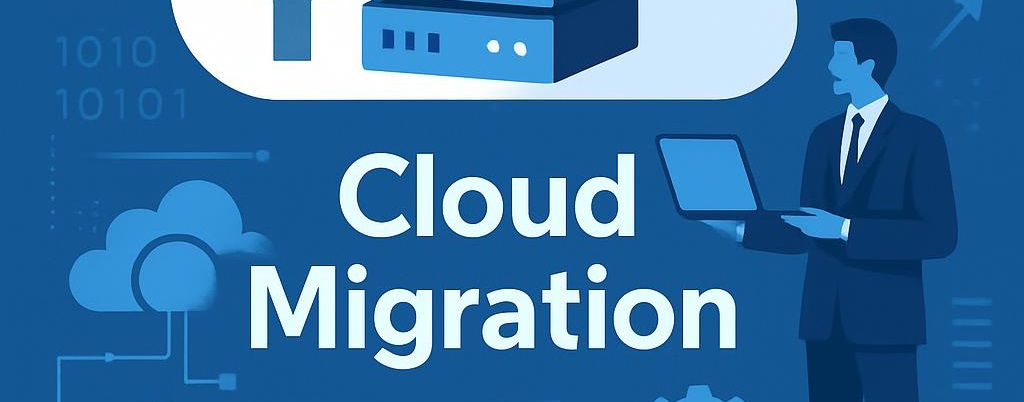
Cloud migration has evolved from a strategic advantage to a business necessity. Organizations across industries are moving their applications, data, and infrastructure to the cloud to enhance agility, scalability, and cost-efficiency. However, successful cloud migration requires careful planning and execution. This comprehensive guide outlines a strategic roadmap for organizations embarking on their cloud journey.
The foundation of any successful cloud migration is a thorough assessment of your current IT environment. This initial phase involves documenting existing applications, infrastructure, dependencies, and performance requirements. A comprehensive inventory helps identify which workloads are suitable for migration and which might require refactoring or replacement.
During this phase, it's essential to evaluate your applications based on business criticality, complexity, and compatibility with cloud environments. Tools like application dependency mapping can reveal hidden connections between systems that might impact migration planning. Additionally, this is the time to establish baseline performance metrics that will serve as comparison points after migration.
With a clear understanding of your current environment, the next step is defining your cloud strategy. This involves selecting the appropriate cloud deployment model (public, private, hybrid, or multi-cloud) and service models (IaaS, PaaS, SaaS) based on your specific requirements. Your strategy should align with broader business objectives while addressing technical constraints.
Consider factors such as data sovereignty requirements, compliance obligations, security needs, and performance expectations when formulating your strategy. It's also important to establish governance frameworks that will guide cloud resource management, cost optimization, and security practices. A well-defined strategy provides direction for the entire migration journey and helps prevent costly course corrections later.
There are several approaches to cloud migration, commonly referred to as the "6 Rs": Rehost (lift and shift), Replatform (lift and optimize), Repurchase (drop and shop), Refactor (re-architect), Retain (keep as is), and Retire (eliminate). The appropriate approach depends on each application's specific characteristics and your business objectives.
Rehosting involves moving applications to the cloud with minimal changes and is typically the fastest approach. Replatforming includes some optimizations to take advantage of cloud capabilities. Refactoring involves redesigning applications to be cloud-native, which requires more effort but delivers greater long-term benefits. A phased approach that combines multiple strategies often yields the best results, allowing you to balance speed, cost, and optimization.
Choosing the right cloud service provider (CSP) is a critical decision that will impact your migration's success. Evaluate providers based on service offerings, geographic coverage, pricing models, support options, and compatibility with your workloads. For complex environments, a multi-cloud strategy might be appropriate to leverage the strengths of different providers.
Beyond the core infrastructure, identify the tools and services you'll need for migration, monitoring, management, and security. Many CSPs offer native migration tools, but third-party solutions might provide additional capabilities or support heterogeneous environments. Ensure your selected tools integrate well with both your existing systems and target cloud platforms.
A comprehensive migration plan translates your strategy into actionable steps. This plan should include a prioritized migration sequence, resource requirements, timelines, and contingency measures. Group applications into migration waves based on dependencies, complexity, and business impact.
For each application or workload, document specific migration tasks, responsible teams, testing requirements, and success criteria. Establish clear communication channels and escalation procedures to address issues that arise during migration. The plan should also include training requirements to ensure your team has the skills needed to manage the new cloud environment.
Before beginning the actual migration, prepare both your source environment and the target cloud environment. This includes establishing network connectivity between environments, configuring security controls, and setting up identity and access management systems. For complex migrations, consider implementing a cloud landing zone—a pre-configured environment designed according to best practices.
Data preparation is another critical aspect of this phase. Identify data that needs to be migrated, cleaned, or archived. Develop a data migration strategy that minimizes downtime and ensures data integrity. For large datasets, consider using offline data transfer services or implementing a staged data migration approach to reduce network transfer times.
With thorough preparation complete, execute your migration according to the established plan. Start with non-critical applications to validate your approach and build team confidence before moving to business-critical systems. Implement robust testing at each stage to verify functionality, performance, and security in the cloud environment.
During execution, maintain clear communication with stakeholders about progress, challenges, and any schedule adjustments. Monitor the migration process closely to identify and address issues promptly. Document lessons learned from each migration wave and refine your approach for subsequent phases. For business-critical applications, consider running parallel operations temporarily to enable quick rollback if necessary.
Cloud migration is not the end of the journey but the beginning of continuous optimization. After migrating workloads, monitor performance, resource utilization, and costs to identify optimization opportunities. Implement auto-scaling, right-sizing, and reserved instance purchasing strategies to optimize costs while maintaining performance.
Establish robust governance practices to manage your cloud environment effectively. This includes implementing tagging strategies for resource tracking, setting up budget alerts, enforcing security policies, and regularly reviewing access permissions. Continuous optimization ensures you realize the full benefits of cloud adoption and avoid unexpected cost increases.
Medhyacom Technology offers comprehensive cloud migration services to help your organization seamlessly transition to the cloud. Our expert team will guide you through every step of the journey, from assessment and planning to migration and optimization.
Connect with Medhyacom Technology Today